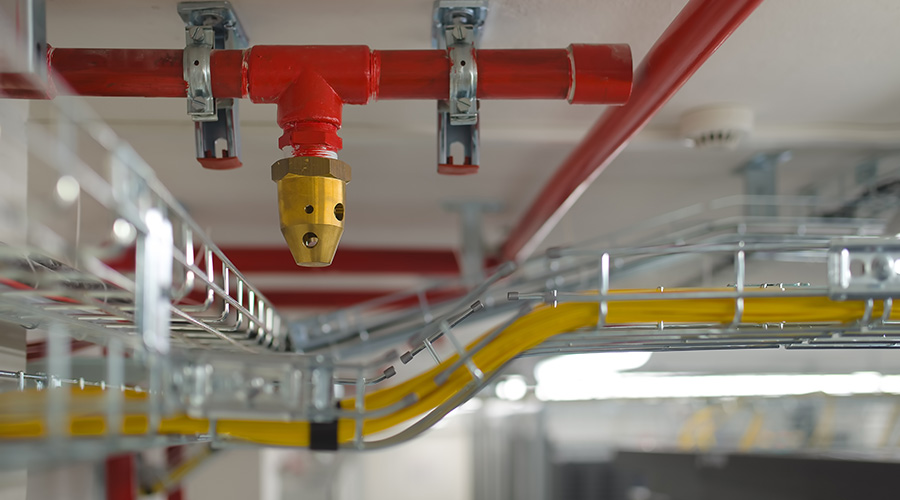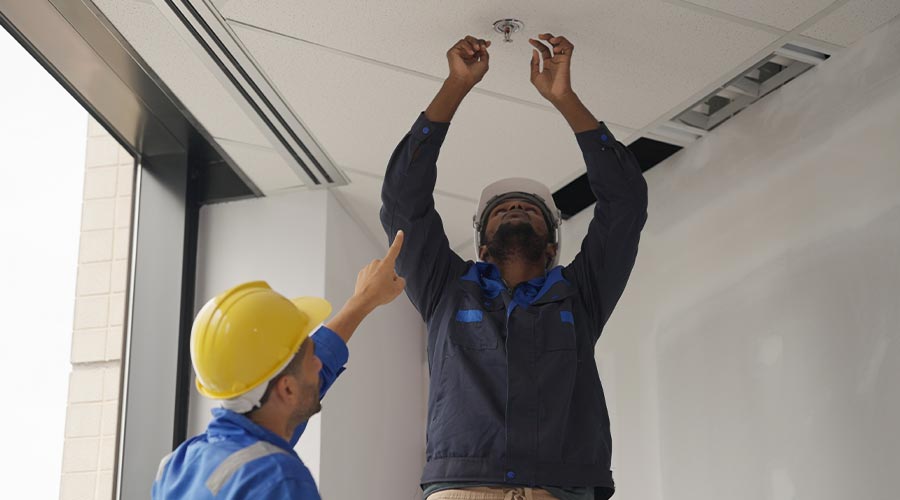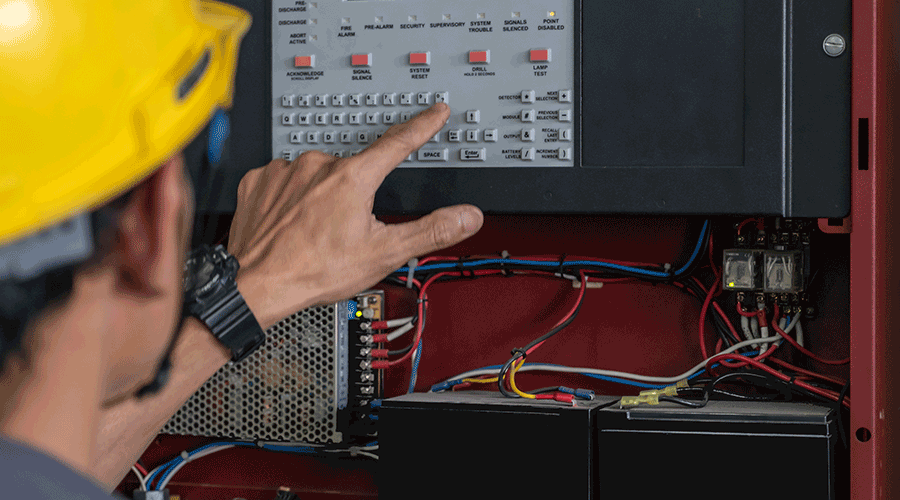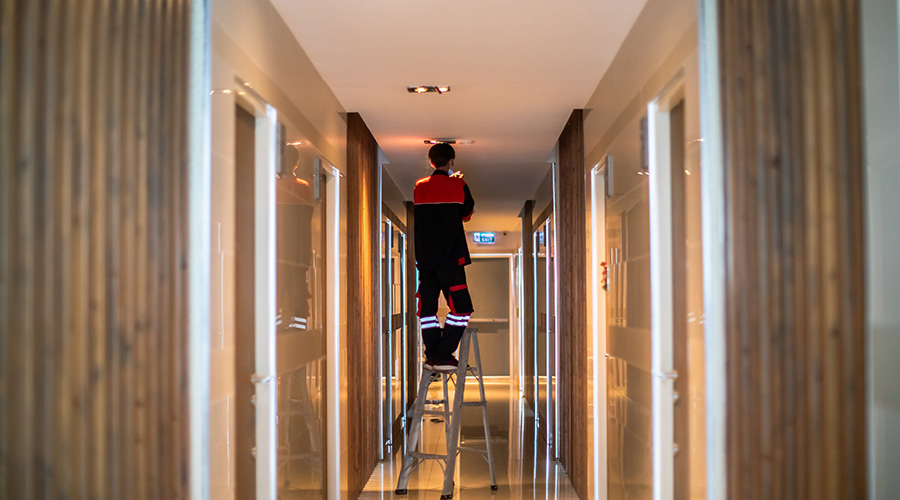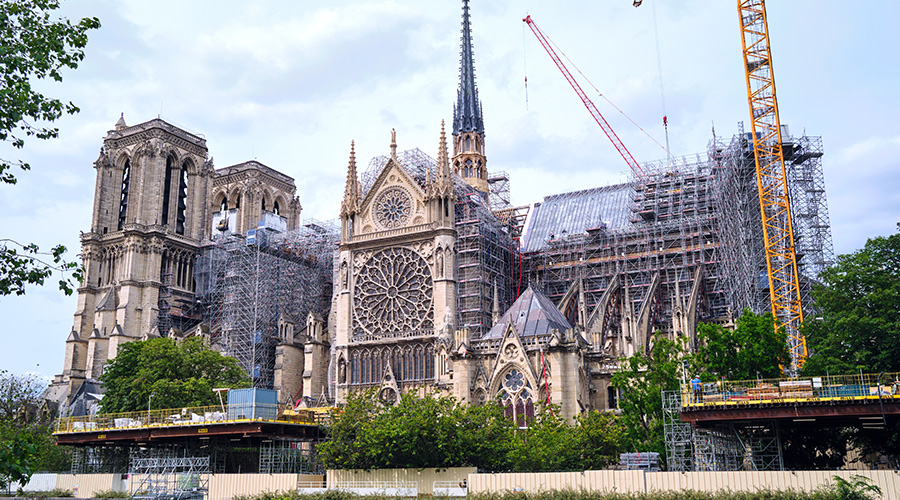Maximizing Fire Suppression Systems
Managers must remain vigilant when planning for the inspection, testing and maintenance of these critical systems
By Jake Meister, Contributing Writer
Many actions, inactions and poor decisions can cause institutional or commercial facilities to catch fire. With fire’s potential to destroy property and lives, maintenance and engineering managers have an obligation to ensure their departments properly install, test and maintain fire-suppression systems.
Managers do not need to be experts on fire-suppression systems, but they need to know enough to enlist the guidance of experts and comply with applicable codes.
System evaluations
The most common and easiest fire-suppression system to maintain in a commercial setting is a wet-pipe sprinkler system. This system is connected to a water supply and consists of a network of sprinklers that are individually, thermally actuated.
This fire-suppression system in one office is not going to trigger sprinklers throughout the facility, just in the location where a temperature threshold is met. The system that goes off everywhere in the facility is rare and more commonly found in high-hazard areas, such as power plants and aircraft hangers.
Warehouses are probably better suited for dry sprinkler or pre-action systems.
“These are all in the same category as wet-pipe systems. The primary difference is whether the sprinkler distribution piping is always filled with water or not,” says Eric Zdankiewicz, fire protection engineer with the Public Works Corps. of the Naval Facilities Engineering Systems Control which plans, builds and maintains facilities for the Navy and Marines Corps. “Additional differences are the valving arrangement, and the level of maintenance required.”
Pre-action systems can also be appropriate options for data centers and facilities storing other sensitive materials, such as art galleries, says Donald Hopkins Jr., owner of Hopkins Fire, a forensic engineering firm in Maryland.
All fire-suppression systems must be inspected, tested and maintained by a fire protection maintenance company or licensed contractor. Rules on how inspections, tests, and maintenance work vary from state to state, or even by municipality.
Mandates also depend on the type of facility or business. A movie theater or restaurant might need more frequent inspections than a small grocery store. Regardless of the location or type of facility, managers should hire an experienced expert who follows the latest industry codes. More importantly, they should select an inspector who has a deep understanding of National Fire Protection Association codes, says Frank Blackley, consultant at AP Triton and former fire marshal for the City of Wilmington, North Carolina.
Maintenance matters
Managers might have little say in the type of fire-suppression system a facility has since that is based on local codes. The type of system is not based on/mandated by codes, but the way the system is installed, tested and maintained is, but they can dictate how suppression systems are maintained.
Blackley says certain types of facilities are more likely to have instances of fire suppression system misuse, damage or neglect, adding that in warehouses, suppression systems can be damaged by the heavy equipment used inside. As a result, he says managers should make employees aware of their surroundings and remind them to be careful. Should a human error occur, like a worker getting careless with a forklift, employees should report any damage they cause. When a fire suppression system is damaged, it is imperative that an expert be contacted immediately.
Another good example of random damage is to sprinklers in hotel rooms that can occur when guests hang clothes or other objects on the sprinkler heads, which can cause thousands of dollars in damage to facilities. It is so prevalent that Blackley once advised a hotel to put up signs instructing guests not to hang anything on sprinkler heads.
Cold weather can freeze pipes, causing them to burst and create an expensive mess. To mitigate such risks, managers should ensure that technicians insulate the rooms where sprinkler rises are located.
Managers also need to ensure that guests do not turn off valves that should be left open. Fortunately, a valve-connected sprinkler system should sound an alarm is tampered with. If it is a monitored system, the alarm call would get transferred to the company doing the monitoring, who should then call the point of contact at the facility and the alarm company.
Once hazards have been identified and the fire-suppression system is up to code, managers need to ensure compliance should there be changes to facilities and systems. If a facility expands or undergoes a major renovation, fire protection engineers or contractors need to be consulted to ensure systems and components remain safe and compliant.
“Folks tend to forget about fire protection and go ahead and make the modifications they want and take themselves out of compliance,” Hopkins says.
Doing extra work
Facility managers must ensure that their fire suppression systems comply with code, but there are times when the kind of facility requires the system to provide more unique and specialized systems.
“Some suppression systems are specific to the data industry to protect server farms or internet service providers,” says Zdankiewicz. “Some are specific to manufacturing processes to protect high value or long-lead time assets. Owners are using these more specialized suppression systems to protect their business assets, to ensure minimal downtime, and the loss of a very expensive asset.”
While also not common, there are situations where facilities are required to go beyond the local mandate and secure additional fire suppression assets. When this occurs, the insurance company might offer lower rates to the business than if there is no asset protection.
While the extra steps taken in the name of fire suppression can be challenging, managers want to stay educated on the latest trends in products and code updates.
“Looking through the lens of fire protection inspection, testing and maintenance (ITM), managers can ensure code compliance by being familiar with the locally adopted standards for ITM, insisting on receiving copies of the ITM documentation, documenting impairments and deficiencies, and having a good working relationship with the fire protection maintenance company,” Zdankiewicz says.
Jake Meister is a freelance writer based in Port Washington, Wisconsin.
Related Topics:








